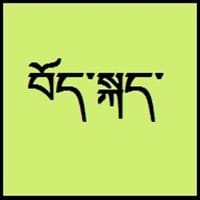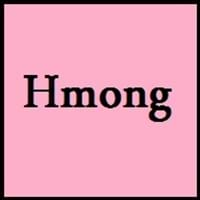Countries
China, Nepal
China, Laos, Thailand, United States of America, Vietnam
National Language
Nepal, Tibet
China, Gambia, Laos, Thailand, United States of America, Vietnam
Second Language
Not spoken in any of the countries
Not spoken in any of the countries, Republic of Brazil
Speaking Continents
Asia
Asia
Minority Language
China, India, Nepal
Not spoken in any of the countries
Regulated By
Committee for the Standardisation of the Tibetan Language
Not Available
Interesting Facts
- Tibetan dialects vary alot, so it's difficult for tibetans to understand each other if they are not from same area.
- Tibetan is tonal with six tones in all: short low, long low, high falling, low falling, short high, long high.
- Hmong language may not be so popular at first sight, but it has rich history and various dialects are spoken by millions of people.
- Hmong language came from western part of China.
Similar To
Not Available
Not Available
Derived From
Not Available
Not Available
Alphabets in
Tibetan-Alphabets.jpg#200
Hmong-Alphabets.jpg#200
Scripts
Tibetan alphabet, Tibetan Braille
Latin
Writing Direction
Left-To-Right, Horizontal
Left-To-Right, Horizontal
Hello
བཀྲ་ཤིས་བདེ་ལེགས། (tashi delek)
Nyob zoo (Nyaw zhong)
Thank You
ཐུགས་རྗེ་ཆེ་། (tujay-chay)
Ua tsaug (Oua jow)
How Are You?
ཁྱེད་རང་སྐུ་གཇུགས་བདེ་པོ་ཡིན་པས།
(kayrang kusu debo yimbay?)
Koj nyob li cas (Gaw nyaw lee cha)
Good Night
གཟིམ་ལཇག་གནང་དགོས་། (sim-jah nahng-go)
zoo hmo
Good Evening
དགོང་དྲོ་བདེ་ལེགས།
zoo yav tsaus ntuj
Good Afternoon
ཉིན་གུང་བདེ་ལེགས།
zoo tav su
Good Morning
སྔ་དྲོ་བདེ་ལེགས། (nga-to delek)
zoo thaum sawv ntxov
Please
thu-je zig / ku-chee.
thov
Sorry
ཀོང་དགས་། (gawn-da)
Thov txim (Thaw zhee)
Bye
ག་ལེར་ཕེབས་། (kha-leh phe)
Not Available
I Love You
ང་ཁྱེད་རང་ལ་དགའ་པོ་ཡོད་ (nga kayrâng-la gawpo yö)
Kuv hlub koj
Excuse Me
དགོངས་དག བཟོད་དུ་གསོལ། ཐུགས་རྗེ་གཟིགས།
zam txim rau kuv
Dialect 1
Central Tibetan
Hmong Njua
Where They Speak
China, India, Nepal
Laos
Dialect 2
Khams Tibetan
Hmong Daw
Where They Speak
Bhutan, China
China
Dialect 3
Amdo Tibetan
Hmong Do
Where They Speak
China
Vietnam
How Many People Speak
Not Available
Speaking Population
Not Available
Native Name
བོད་སྐད་ (pö-gay)
Hmong
Alternative Names
Bhotia, Dbus, Dbusgtsang, Phoke, Tibetan, U, Wei, Weizang, Zang
Mong
French Name
tibétain
hmong
German Name
Tibetisch
Miao-Sprachen
Pronunciation
Not Available
Not Available
Ethnicity
tibetan people
Hmong people
Language Family
Sino-Tibetan Family
Hmong–Mien Family
Subgroup
Tibeto-Burman
Not Available
Branch
Not Available
Not Available
Early Forms
Old Tibetan, Classical Tibetan
No early forms
Standard Forms
Standard Tibetan
Hmong
Signed Forms
Tibetan Sign Language
Not Available
Scope
Not Available
Macrolanguage
ISO 639 1
bo
No data available
ISO 639 2/T
bod
Not Available
ISO 639 2/B
tib
Not Available
ISO 639 6
Not Available
Not Available
Glottocode
tibe1272
firs1234
Linguasphere
No data Available
No data available
Language Type
Not Available
Living
Language Linguistic Typology
Not Available
Not Available
Language Morphological Typology
Not Available
Not Available
Tibetan and Hmong Greetings
People around the world use different languages to interact with each other. Even if we cannot communicate fluently in any language, it will always be beneficial to know about some of the common greetings or phrases from that language. This is where Tibetan and Hmong greetings helps you to understand basic phrases in Tibetan and Hmong language. Tibetan word for "Hello" is བཀྲ་ཤིས་བདེ་ལེགས། (tashi delek) or Hmong word for "Thank You" is Ua tsaug (Oua jow). Find more of such common Tibetan Greetings and Hmong Greetings. These greetings will help you to be more confident when conversing with natives that speak these languages.
Tibetan vs Hmong Difficulty
The Tibetan vs Hmong difficulty level basically depends on the number of Tibetan Alphabets and Hmong Alphabets. Also the number of vowels and consonants in the language plays an important role in deciding the difficulty level of that language. The important points to be considered when we compare Tibetan and Hmong are the origin, speaking countries, language family, different greetings, speaking population of these languages. Want to know in Tibetan and Hmong, which language is harder to learn? Time required to learn Tibetan is 24 weeks while to learn Hmong time required is 44 weeks.





